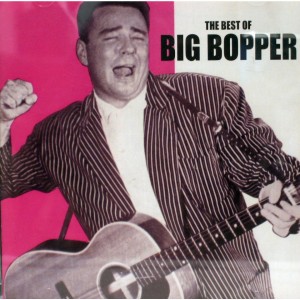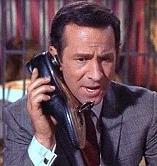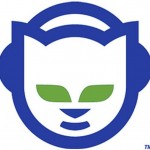 Many of us of a certain age remember the “day the music died” when Buddy Holly and the Big Bopper’s plane crashed. Or if not the actual day we get the reference that was most notably chronicled in the song “American Pie” by Don McLean. But there is another day that is harder to pin down, when digital music finally took over and we never looked back on CDs, cassettes, 8 track tapes and vinyl. I put that date somewhere around 1999-2000, depending on how old you were and how much analog music you had already collected by then.
Many of us of a certain age remember the “day the music died” when Buddy Holly and the Big Bopper’s plane crashed. Or if not the actual day we get the reference that was most notably chronicled in the song “American Pie” by Don McLean. But there is another day that is harder to pin down, when digital music finally took over and we never looked back on CDs, cassettes, 8 track tapes and vinyl. I put that date somewhere around 1999-2000, depending on how old you were and how much analog music you had already collected by then.
It certainly has been an amazing period of time when you recall what music was like back in the day before all the iThings came along. For the most part it has been a mixed bag. Here are five mega-trends to consider.
 1. Music is more mobile. Back then we had separate rooms of our homes where we could listen to music, and only in those rooms. The notion of carrying most of your music collection around in your pocket was about as absurd as Maxwell Smart’s shoe-phone. We had separate radio stations with different music formats too that helped with discovering new music, and would carry recordings to our friends’ homes to play on their expensive stereos. Stereos were so named because they had two speakers the size of major pieces of furniture.
1. Music is more mobile. Back then we had separate rooms of our homes where we could listen to music, and only in those rooms. The notion of carrying most of your music collection around in your pocket was about as absurd as Maxwell Smart’s shoe-phone. We had separate radio stations with different music formats too that helped with discovering new music, and would carry recordings to our friends’ homes to play on their expensive stereos. Stereos were so named because they had two speakers the size of major pieces of furniture.
Just about everything in that paragraph has changed in 20 years. Having two speakers to listen to your music is so limiting, and you can buy a multichannel system for a couple hundred bucks these days. My iTunes music library has more music that I can listen to continuously for two weeks and close to 30 GB of files, and I am sure yours is equally vast. Songs that I ripped to the digital format are still intact 10 years later (I know I have some of the CDs around here someplace), and I can listen to music whenever and whenever I want.
2. The whole music discovery process has also been transformed. You can listen to any of thousands of tracks before you buy them in the major digital music stores. And then there are sites such as NoiseTrade who offer thousands of entire tracks free for the downloading (tipping is suggested but not required): it has become one of my favorite places to find new artists. Playlists make it easy to set up groups of tracks for every activity, something that you had to be a love-struck teenager willing to spend the effort for a mix tape, or be a DJ at your college radio station.
 3. Sharing is caring. At the beginning of this digital music transformation was Napster. It was the undoing of the music industry, making it easy for anyone to share digital copies of thousands of songs across the Internet. While they were the most infamous service, there were dozens of other products, some legit and some fairly shadowy, which I describe in this story that I wrote back in November 2001 that shows some of the interfaces of these forgotten programs.
3. Sharing is caring. At the beginning of this digital music transformation was Napster. It was the undoing of the music industry, making it easy for anyone to share digital copies of thousands of songs across the Internet. While they were the most infamous service, there were dozens of other products, some legit and some fairly shadowy, which I describe in this story that I wrote back in November 2001 that shows some of the interfaces of these forgotten programs.
One of my readers writes in:
I follow very closely the music side of the IT world, involved as I have been with music for many years, so I have just a few comments (!). Not meaning to sound like an old fogey [did you know the derivation of this word? From Wiktionary: In 1811, an Old Fogey was a nickname for an invalid, wounded soldier; derived from the French word fougueux (fierce or fiery).] —
1. One of the unfortunate remnants of the Napster era (and surely I experimented as much as anyone) is that many, many people I meet (from teenagers on up) take it for granted (even assume) that stealing music one way or the other is simply ‘normal’.
2. More significantly I think one of the major downsides to the digital music revolution is the loss, for the most part, of the entire concept of an ‘album’ of songs, a carefully orchestrated collection of songs in a certain order with varying moods and sometimes a building of emotions etc, somewhat akin to a theatrical production (even down to the separation into Act/Side 1 and Act/Side 2). Just to cite one shining (boomer) example, I still recall my friend excitedly sitting me down in his dorm room to have me listen to the Sargent Pepper production, complete with its dramatic “A Day in the Life” finale. I think something major has been lost nowadays.
Coincidentally with your column, my daughter (now 36) and I were talking just last week about vinyl albums, which she still was witness to early on, and she was bemoaning the loss of albums. I think a lot of Gen Y’ers have simply forgotten that they could still revive that experience if they purchased CDs instead of downloading or streaming individual tracks (albeit at an arguably different quality that the old LPs). She doesn’t even have anymore a device capable of playing a CD.
Back to Strom here.
I would agree with his sentiments. I still remember the “concept album: of Thick as a Brick — that was perhaps one of the more elegantly constructed ones, with both liner notes and songs around a solid theme.
And it is sad that someone can’t play any CDs or DVDs on their current equipment, but I guess that shows the power of streaming.
At the very least this is more informative than one of the reality
TV stars, kim who? Joey what?